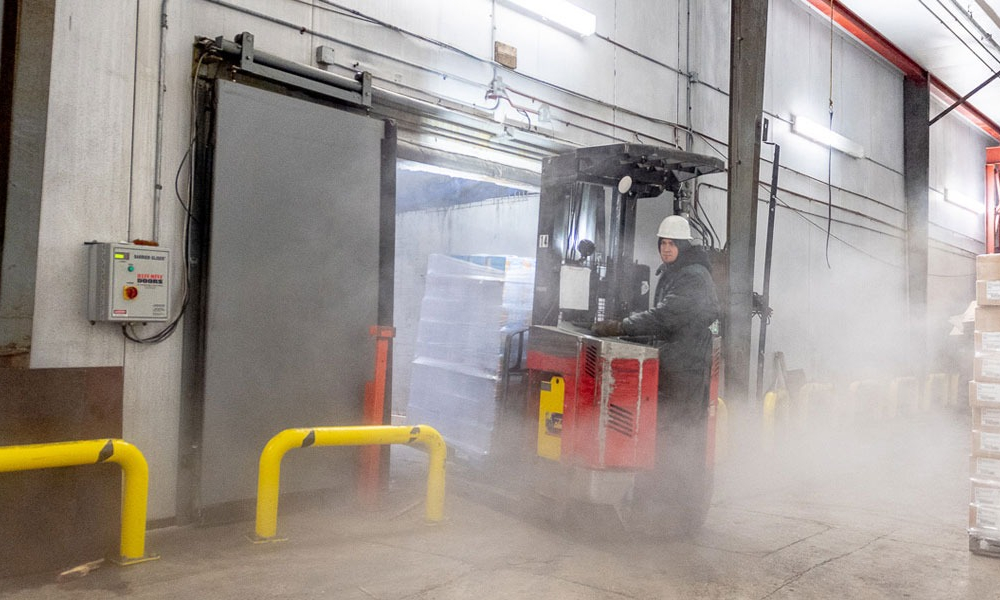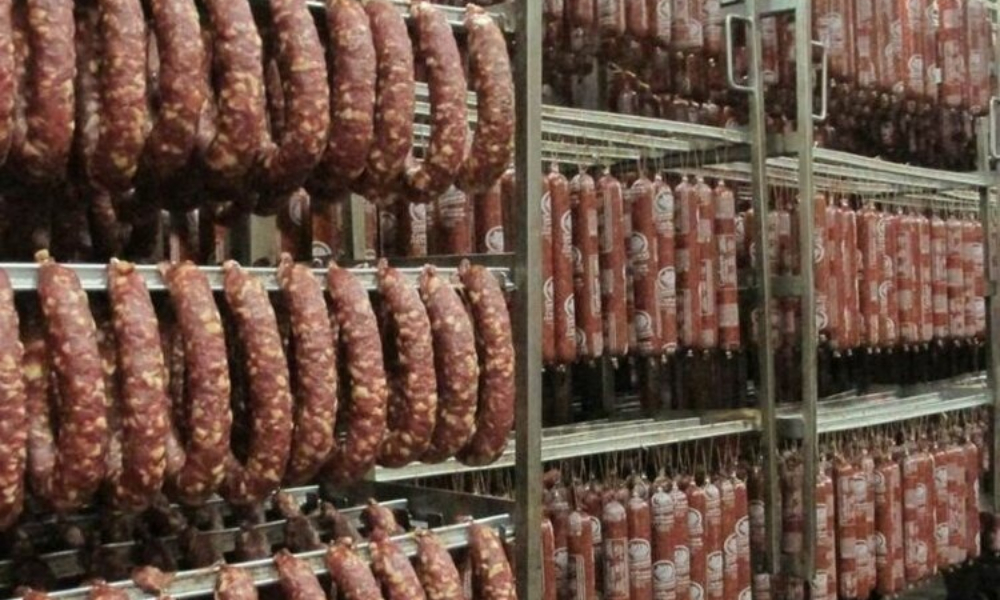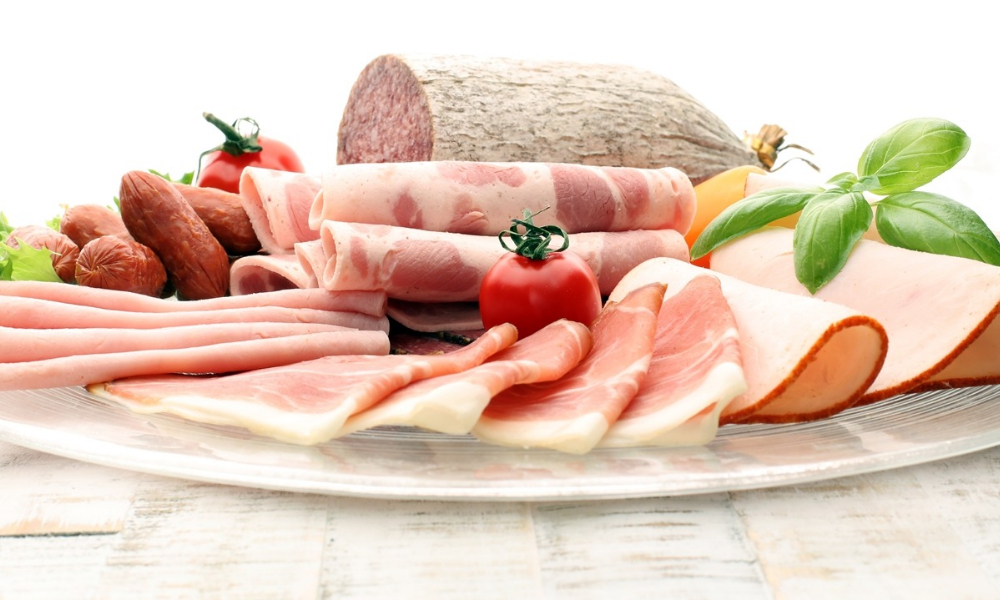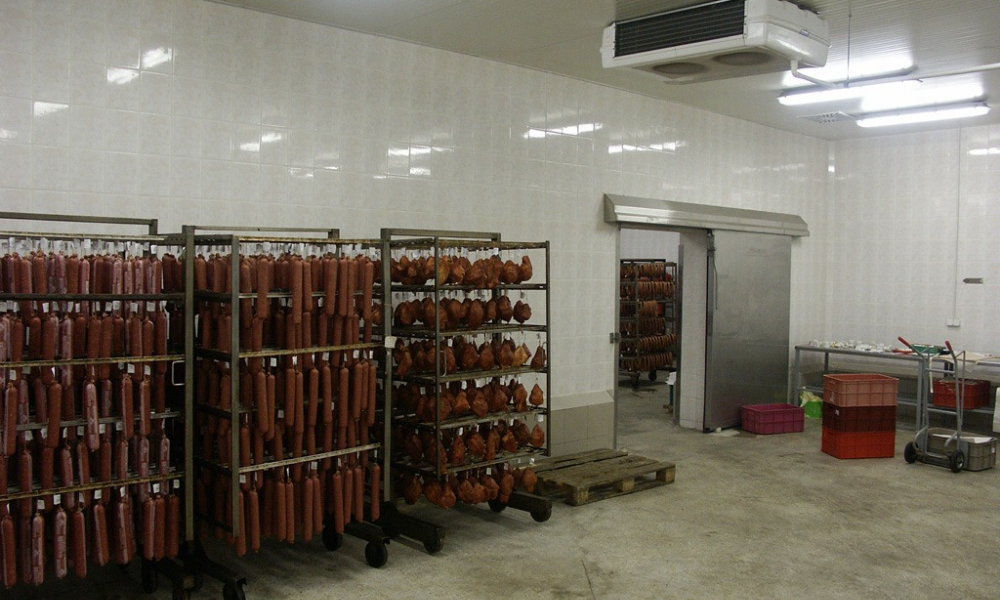Ideal Conditions for Storing Sausage and Cold Cuts in Cold Storage
Sausage and cold cuts spoil within a few hours at room temperature. The spoilage rate depends on factors such as type, temperature, humidity, and air circulation.
Cold Storage Temperature for Sausage and Cold Cuts
The ideal temperature for short- to mid-term storage of sausage and cold cuts is 0 to 4 degrees Celsius. For long-term storage, the temperature should be lowered to -18 degrees Celsius or less.
Engineering Considerations
- High temperatures can alter the taste and texture of sausage and cold cuts, making them sour, spicy, or spoiled, and the texture can become loose, sticky, or slimy. High temperatures can also degrade vitamins, minerals, and antioxidants.
- Low temperatures (below 0 degrees Celsius) generally do not have significant adverse effects. Freezing at -18 degrees Celsius or less can extend their shelf life. However, prolonged freezing or repeated freezing and thawing can reduce quality. Slow freezing can form ice crystals that damage the texture.
Microbiology and Microorganisms
Various microorganisms can affect the quality, taste, freshness, and safety of sausage and cold cuts in cold storage.
- Bacteria
- Lactic acid bacteria: Important for unique flavor and texture.
- Spoilage bacteria: Cause sour smell, unpleasant taste, and unsuitable texture.
- Pathogenic bacteria: Such as Listeria monocytogenes and Staphylococcus aureus, can cause food poisoning.
- Molds: Can grow on the surface, altering color, taste, and texture.
- Yeasts: Can ferment sugars, causing sour smell and unpleasant taste.
Chemical Engineering
Cold storage temperature significantly impacts chemical reactions in sausage and cold cuts.
- Proteolysis: Breakdown of proteins into amino acids by protease enzymes. Low temperatures reduce enzyme activity, preserving texture and flavor.
- Oxidation: Reaction of fats with oxygen, changing color, taste, and smell. Low temperatures slow oxidation.
The ideal relative humidity in cold storage
The ideal relative humidity in cold storage for sausage and cold cuts is between 70% and 75%. Low humidity (below 60%) can cause dryness, weight loss, cracking, and changes in taste and texture. High humidity (above 80%) can accelerate microorganism growth, make the surface slimy, change color, and cause spoilage.
Food Microbiology
Understanding microbial growth in sausage and cold cuts helps develop control methods.
- Cold Storage: Low temperatures reduce enzyme activity in microorganisms and slow chemical reactions.
- Salting: Draws water out of microorganisms, creating an unsuitable growth environment.
- Preservatives: Nitrates and nitrites prevent microbial growth.
- Proper Packaging: Prevents air, moisture, and contamination.
- Hygiene: Washing hands before and after handling and cleaning surfaces regularly prevents microbial spread.
Food Engineering and Packaging
Sausage and cold cuts can be categorized by product type (cooked sausage, smoked sausage, cooked cold cuts, smoked cold cuts, and ham) and production date. Proper packaging materials include plastic containers, glass containers, and vacuum packaging.
- Packaging Features: Must be air, moisture, and contamination-resistant, durable, and environmentally friendly.
- Ventilation and Ethylene Control: Avoid storing with high ethylene-producing fruits and vegetables. Proper ventilation preserves quality, flavor, freshness, and safety.
Modern Cold Storage Technology
Recent advancements improve quality, efficiency, and energy savings.
- Temperature and Humidity Control Systems: Precisely control and prevent fluctuations.
- New Insulation Materials: Such as polyurethane foams, reduce cold loss and energy consumption.
- LED Lighting Systems: Low energy consumption and minimal heat production.
- Remote Monitoring Systems: Track conditions and address issues promptly.
Benefits of Cold Storage
- Extended Shelf Life: Reduces spoilage and waste.
- Prevents Odor Absorption: Prevents unpleasant odors from affecting flavor.
- Maintains Taste and Texture: Prevents drying, color loss, and taste changes.
Technical Specifications and Key Points
- Temperature and Humidity Control: Avoid fluctuations to preserve quality.
- Ventilation System: Ensure adequate air circulation to prevent gas and moisture buildup.
- Cleanliness: Regularly clean and disinfect to prevent microbial growth.
- Organization: Properly organize for airflow and easy access. Use shelves and avoid overcrowding.
Adhering to these guidelines helps create an ideal environment for storing sausage and cold cuts, ensuring long-term quality, safety, and enjoyment.





